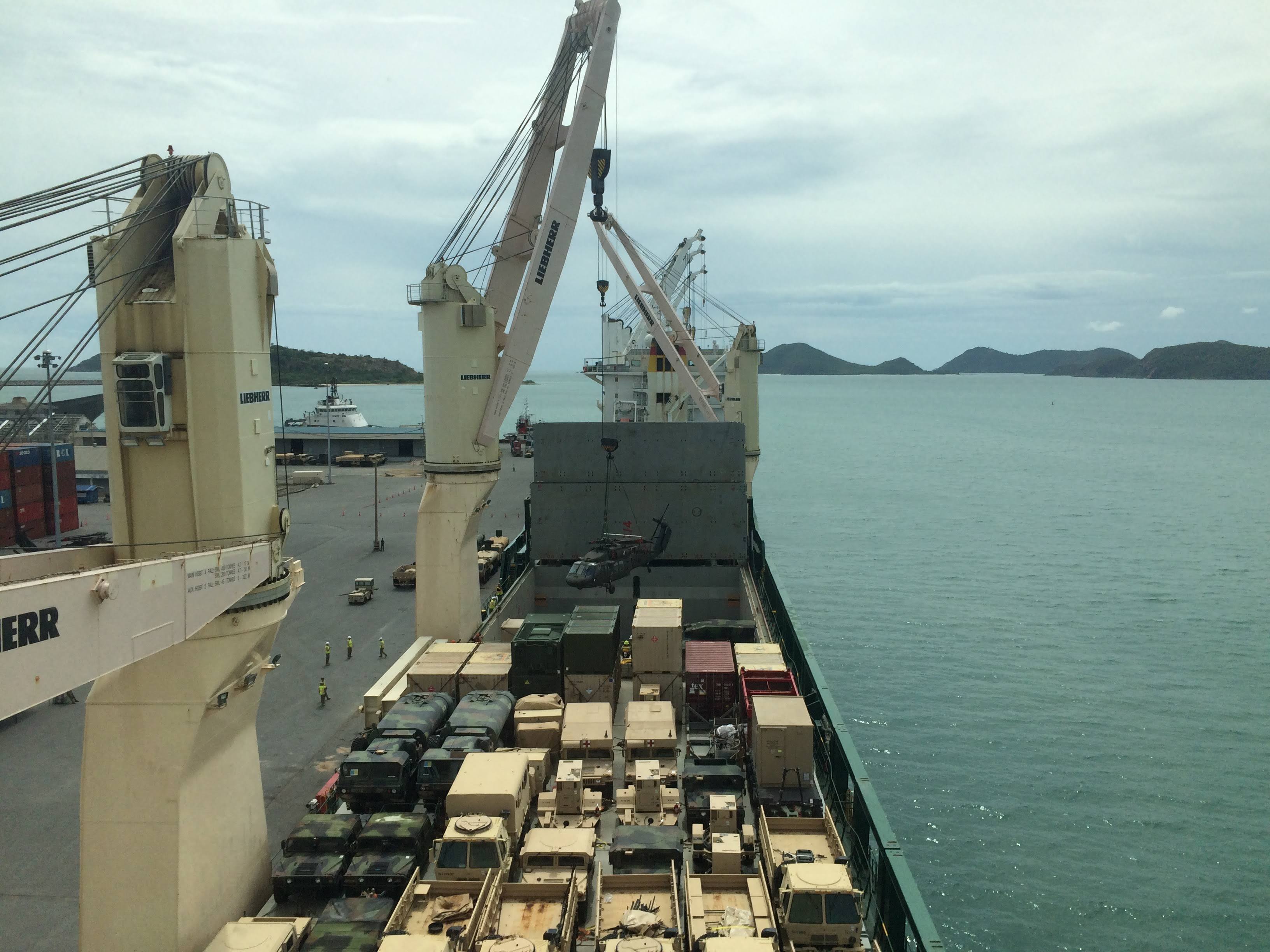
Inaccurate surge sealift fleet readiness reporting misled geographic combatant commanders about their ability to quickly receive equipment resupplies, according to a Department of Defense Inspector General’s report.
The Military Sealift Command spent $742.5 million to maintain the nation’s fleet of 50 surge sealift ships between Fiscal Years 2016 and 2018. However, MSC never verified whether its contractors accurately submitted reports detailing whether the nation’s surge sealift ships were even mission ready, according to the IG report.
Poor MSC oversight, unreliable readiness reports and the downplaying of major deficiencies in the nation’s military surge sealift fleet likely resulted in geographic combatant commanders making inaccurate assumptions about their ability to receive resupply shipments of critical equipment, according to the report.
The IG report found numerous instances when contractors hired to maintain the ships in the surge fleet did not appropriately classify problems on the ships, including the most severe Category 4 casualty reports, which would result in a ship not being able to leave port.
“The surge sealift provides 90 percent of cargo space needed to meet OPLAN [operational plan] requirements,” the IG reports states. “For example, the inability of a single ship to perform its mission could result in an armored brigade combat team’s equipment not being delivered when expected.”
The IG report uses USNS Mendoca (T-AKR-303) as an example. The Bob Hope-class roll-on, roll-off (RO/RO) vehicle cargo ship has a capacity of 386,662 square-feet – large enough to transport an Army armored brigade combat team.
According to the Congressional Budget Office’s primer on military structure, an Army armored brigade combat team typically consists of 1,327 vehicles, including:
- 87 M1A2 Abrams tanks
- 142 Bradley fighting vehicles
- 66 armored personnel carriers
- 18 Paladin 155 mm howitzers
- 164 heavy expanded trucks
The health of the military’s sealift capability is one of the top readiness concerns and the most talked about with Secretary of Defense Mark Esper, said Army Gen. Stephen Lyons, the commander of U.S. Transportation Command, during an appearance Tuesday morning at the Atlantic Council.
“I frankly agree the readiness of the fleet is not where it needs to be to support the movement of the size of the force,” Lyons said.
The 50-ship surge sealift fleet is divided into two groups – 15 DoD ships managed by the Military Sealift Command, and 35 ships managed by the U.S. Department of Transportation Maritime Administration (MARAD). All told, these ships account for roughly 10.7 million square feet of cargo space.
TRANSCOM coordinates the logistics for other combatant commands. TRANSCOM oversees the MSC-managed surge sealift fleet, which is used to move large amounts of equipment to geographic combatant commands quickly.
The sealift surge fleet’s readiness problems are directly tied to the age of the ships, Lyons said. The average ship is 50 years old. The money available for maintaining these ships, Lyons said, “is woefully inadequate to come back out of the shipyard in a ready status.”
While the IG report provides a harsh snapshot of the surge sealift fleet’s capability during 2017 and 2018, a September exercise designed to stress the surge fleet suggests the readiness of surge fleet has not improved much.
A no-notice test of the Ready Reserve Force in September, called a Turbo Activation, found that only 60 percent of the force was considered ready. Of those ships, only 40 percent were actually able to leave port, retired Rear Adm. Mark Buzby, the MARAD administrator, said recently at the 2020 Surface Navy Association Symposium.
“We kind of confirmed what we knew and that the readiness of the fleet today is not where it needs to be,” Lyons said, speaking about the Turbo Activation on Tuesday. “The Navy acknowledges that. We acknowledge that. We’ve been on the Hill, and the Hill acknowledges that.”
While the Turbo Activation demonstrated the readiness concern, the IG report suggests the entire surge sealift operation has deeper problems than just money, Sal Mercogliano, an associate professor of military and maritime history at Campbell University in North Carolina, told USNI News.
“The IG never looked into why is there a disconnect between what the operators (say) what’s the actual condition on the vessels versus what MSC’s reporting,” Mercogliano said.
The surge fleet is dispersed to ports on the West Coast, East Coast and Gulf Coast, which makes it harder for the small number of MSC engineers to inspect ships, Mercogliano said. At the same time, MSC years ago switched from cost-reimbursable contracts to fixed-price contracts. The result is contractors underbid their competitors but tend to put off extensive maintenance until absolutely necessary because performing such work cuts into their profits.
“They said they spent that money in the IG report. OK, what are they spending that money on?” Mercogliano said. “Is that money all for maintenance and repair, or is that just normal operating funds to pay crew members onboard, periodic checks. How is that money actually being spent?”
Mercogliano thinks the surge sealift fleet’s readiness status will get more attention during the upcoming legislative session. When Buzby and Lyons return to Capitol Hill in a few to provide lawmakers with an update on the surge sealift capability, they will arrive armed with more examples for why the system needs more money, he said.
“I think it is going to get more attention. I go back to Buzby and Lyons at the March 2019 [congressional] hearings, and they were very, very blunt and upfront, and they said this is the problem. And they’ve managed. And then September came around and they demonstrated the problem again. And here’s an IG report that says it’s even worse than we thought,” Mercogliano said. “I don’t think it’s so much in the House and the Senate, to tell you the truth, it’s is the senior military listening to this to be the problem.”





